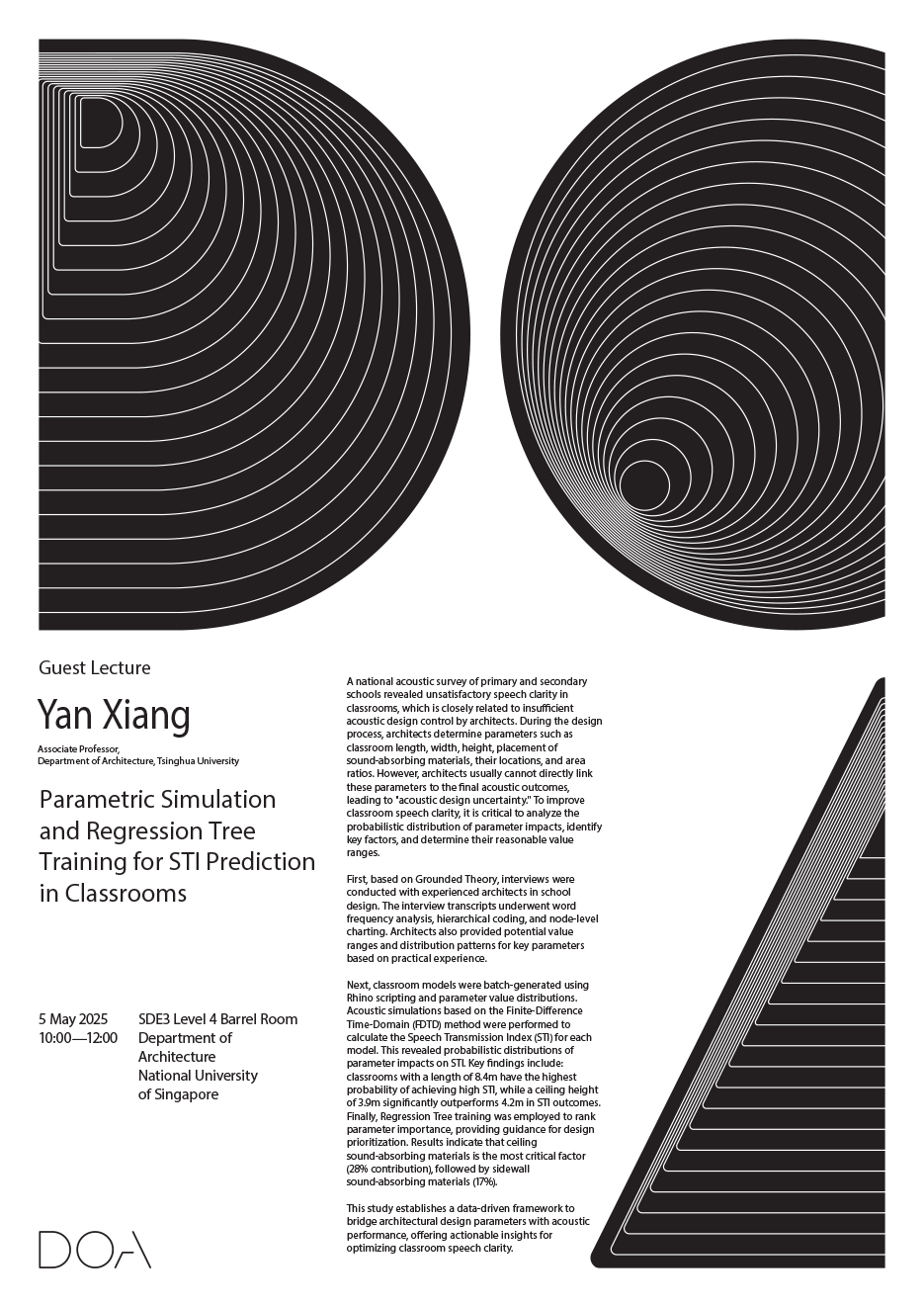Parametric Simulation and Regression Tree Training for STI Prediction in Classrooms
Name of Event/Lecture
Parametric Simulation and Regression Tree Training for STI Prediction in Classrooms
Name of Speaker
Yan Xiang
Location
SDE3 Level 4, Barrel Room

You are cordially invited to attend the lecture event by Yan Xiang:
Date: 5 May 2025
Time: 10:00—12:00
Venue: SDE3, Level 4, Barrel Room
A national acoustic survey of primary and secondary schools revealed unsatisfactory speech clarity in classrooms, which is closely related to insufficient acoustic design control by architects. During the design process, architects determine parameters such as classroom length, width, height, placement of sound-absorbing materials, their locations, and area ratios. However, architects usually cannot directly link these parameters to the final acoustic outcomes, leading to “acoustic design uncertainty.” To improve classroom speech clarity, it is critical to analyze the probabilistic distribution of parameter impacts, identify key factors, and determine their reasonable value ranges.
First, based on Grounded Theory, interviews were conducted with experienced architects in school design. The interview transcripts underwent word frequency analysis, hierarchical coding, and node-level charting. Architects also provided potential value ranges and distribution patterns for key parameters based on practical experience.
Next, classroom models were batch-generated using Rhino scripting and parameter value distributions. Acoustic simulations based on the Finite-Difference Time-Domain (FDTD) method were performed to calculate the Speech Transmission Index (STI) for each model. This revealed probabilistic distributions of parameter impacts on STI. Key findings include classrooms with a length of 8.4m have the highest probability of achieving high STI, while a ceiling height of 3.9m significantly outperforms 4.2m in STI outcomes.
Finally, Regression Tree training was employed to rank parameter importance, providing guidance for design prioritization. Results indicate that ceiling sound-absorbing materials is the most critical factor (28% contribution), followed by sidewall sound-absorbing materials (17%).
This study establishes a data-driven framework to bridge architectural design parameters with acoustic performance, offering actionable insights for optimizing classroom speech clarity.
Yan Xiang
Associate Professor, Department of Architecture, Tsinghua University (2008 – now)
Director, Acoustic Laboratory ,Tsinghua University (2002 – now)
Deputy director , Building Environment Test Center, Tsinghua University(1999 – now)
Vice Chairman , Architectural Acoustics Branch, Acoustical Society of China(2018 – now)
Member of a council, Beijing Acoustical Society (2014 – now)